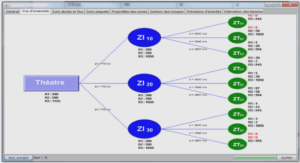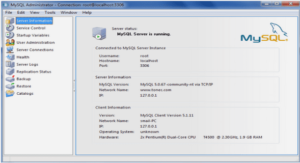The word “radar” is an abbreviation of “radio detection and ranging”. In general, radar systems use modulated waveforms and directive antennas to transmit and radiate electromagnetic energy into a specific volume in space to search for targets (Mahafza & Elsherbeni, 2005). Objects (targets) within the search volume will reflect portions of incident energy (radar returns or echoes) in the direction of the radar. These echoes are then processed to extract target information such as range, velocity, angular position and other target identifying characteristics (Mahafza & Elsherbeni, 2005).
Radar systems were initially developed for military applications, and can be classified as ground-based, airborne, spaceborne, or ship-based. Another type of radar systems classification could be applied based on the frequency band, the antenna type and the waveform. Today, radars are used to accomplish several missions ranging from weather, acquisition and search, tracking, fire control, early warning, terrain following and collision avoidance (Mahafza & Elsherbeni, 2005).
In recent years, the design and operation of radar systems have become increasingly complex. New radar systems should be able to offer more accuracy in terms of target detection in harsh indoor and outdoor environments, intelligently adjust their parameters to cope with dynamic and time-varying radar scenes and cooperate with existent wireless systems to ensure the operability of all systems at acceptable performance levels and under spectrum-sharing constraints.
Background on radar sensor networks
A radar sensor network (RSN) belongs to the category of multisite radar systems (MSRSs), named also: multi radar or netted radar systems. A RSN is defined as a radar system including several spatially separated transmitting, receiving and/or transmitting-receiving facilities, where all the sensors’ information on each target is fused and jointly processed (Chernyak, 1998).
From the above definition, any radar system that is principally composed of a multiplicity of transmitter and receiver elements, and which applies a fusion or joint processing of received target information, could be categorized as an RSN.
RSNs are classified based on several metrics:
• Type of target of interest: an active RSN is composed of at least one transmitting station that is, used to detect non-radiating targets, which are simply reflecting targets. By contrast, passive RSNs are principally based on only receiving stations and are used to detect radiating targets. A mixed passive-active RSN could also be used for both types of target detection;
• Degree of spatial coherence: RSN’s spatial coherence is defined as its ability to maintain strong dependence between signal RF phases in separated stations, and consequently to make use of relevant information contained in those phase relations (Chernyak, 1998). It represents the phase stability of RSN equipment. It should be distinguished from the spatial coherence of signals at the inputs of the RSN receiving stations, which depends on baselengths between stations, signal wavelength, target size and fluctuations of the propagation medium characteristics (Chernyak, 1998).
Considering the spatial configuration of radar elements, four major classes of RSN could be defined:
• Distributed RSN: this type of RSN is composed of several monostatic radar stations that operate independently. Each radar station performs target radar processing individually and sends its decision to a cluster head (i.e., fusion center), which receives detection signals from different radar stations and make a final decision on target detection based on specific combination algorithms (Liang & Liang, 2011).
• Collocated (coherent) MIMO RSN: inspired by the development of the MIMO concept in communication system, the concept of MIMO radar has been initially introduced in (Fishler et al., 2004). A MIMO radar simultaneously transmits multiple orthogonal waveforms by multiple antennas. A bank of matched filters is used at each receiver level in order to match the received signal to different orthogonal transmitted waveforms. The outputs of the matched filters are then processed for target detection. Collocated MIMO RSN are a type of MIMO radar sensors, wherein transmit and receive antennas are collocated. The signals received by different receivers are highly correlated due to proximity between the receivers. Thus, coherent processing could be enabled on collocated MIMO RSNs, leading to maximization of the processing gain. It was shown that collocated configuration can be used for beamforming application around targets of interest by proper choice of transmit waveforms and processing (Stoica, Li & Xie, 2007); (Li & Stoica, 1998). In addition, the collocated MIMO configuration offers accurate parameters estimation (Xu, Li, Stoica &, 2008); (Li, Stoica & Xu, 2007), high resolution, high degrees of freedom (Bliss & Forsythe, 2003), and better sensitivity (Forsythe, Bliss & Fawcett, 2004) to ground-moving targets.
• Distributed (also called statistical) MIMO RSN: unlike coherent MIMO RSN, which counts on coherent processing gain due to correlated responses received at the closelyspaced receivers, a statistical MIMO radar, initially introduced in (Fishler et al., 2006), leverages the diversity of uncorrelated target scattering responses received at different receivers. In real scenarios, a radar target is composed of several point scatterers. Small fluctuations at the response of the point scatterers and their number result in variation of the target Radar Cross Section (RCS). This variation can cause target fades, which is a synonym of radar performance degradation (since closely-spaced antenna systems are more sensitive to target fades). In the case of distributed (statistical) MIMO radar, spatial separation between antenna elements at the transmitter and at the receiver ensure independent target scattering responses at different receiver element. This improves the radar performance in a different manner by leveraging the spatial diversity offered by the system (since target angular spread is manifested).
• Netted radar sensor systems (Baker & Hume, 2003); (Hume & Baker, 2001): these are a general form of RSN, wherein each node can operate monostatically and bistatically with other nodes of the network. It can be seen from the definition of “netted radar” concept that these systems are somewhat like combination of the distributed RSN and the MIMO RSN types.
Regarding the fusion approach used in radar sensor networks, the detection could either be centralized or distributed. In centralized detection, the signals received at different stations are directly fed to the fusion center for joint processing (although a few basic operations could be carried out at each station level, such as linear filtering). In distributed detection, the radar processing, including thresholding and parameter estimation, is carried out at each station level. Then only useful information such as the presence or absence of target, is fed to the fusion center, where a final decision is made as a result of combining the preliminary decisions sent by different stations.
RSN presents a variety to advantages compared to monostatic radar or a collection of nonintegrated radars, due to its information fusion and spatial diversity capabilities. The main advantages of RSN are improved capabilities of target detection and parameters estimation, classification and location capabilities, and extended coverage and availability of spatial diversity for distributed systems. It can offer a counter to stealth technology and can improve the system countermeasure and jamming resistance capabilities. In addition, RSN systems may offer power gain benefits, especially in the case of cooperative signal reception and fusion.
Despite the great number of advantages that RSN systems offer, many shortcomings are also present due to the nature of these systems. One of the main drawbacks is the increased cost and complexity compared to single monostatic or bistatic radars, and the increased demand on data processors and computer systems. In addition, a high level of synchronization is required for basic RSN operation, because there is a minimum requirement of frequency and time synchronization for non-coherent networks in addition to the phase synchronization required in the case of coherent networks.
RSN systems are mainly used in military applications (Chernyak, 1998), although there have been increasingly important civil applications, chiefly for marine, air navigation and remote sensing purposes (Chernyak, 1998). Depending on the type of application, ground-based, air, space, or shipborne RSNs could be used with or without stations mobility.
INTRODUCTION |




